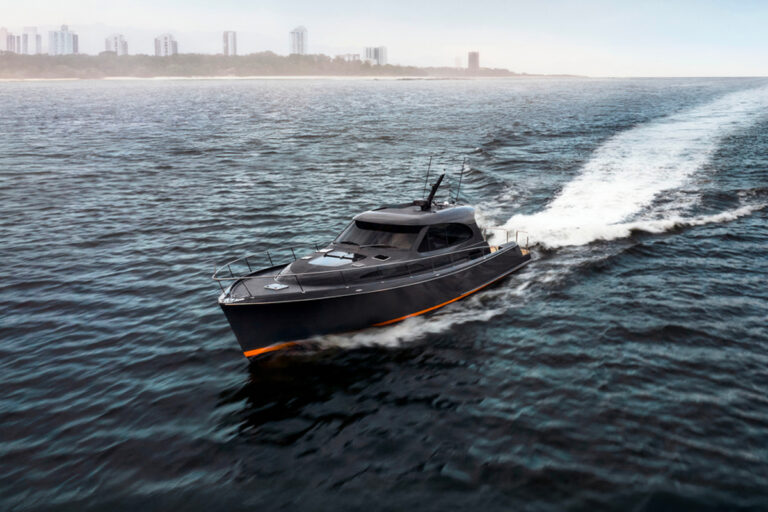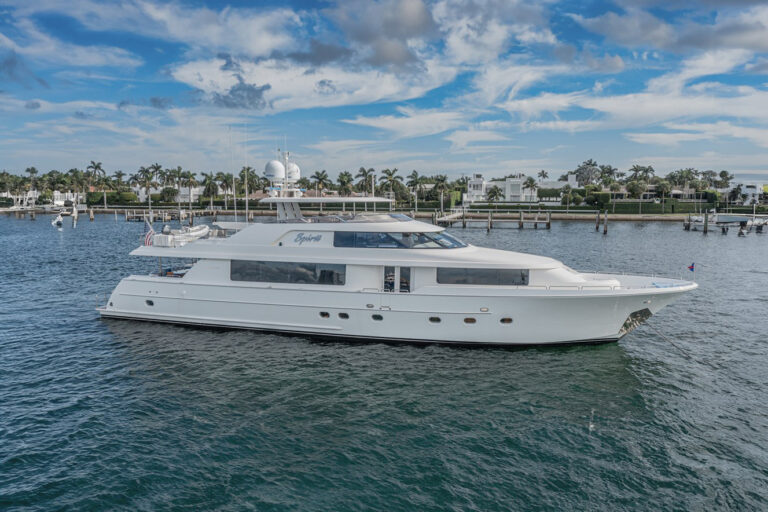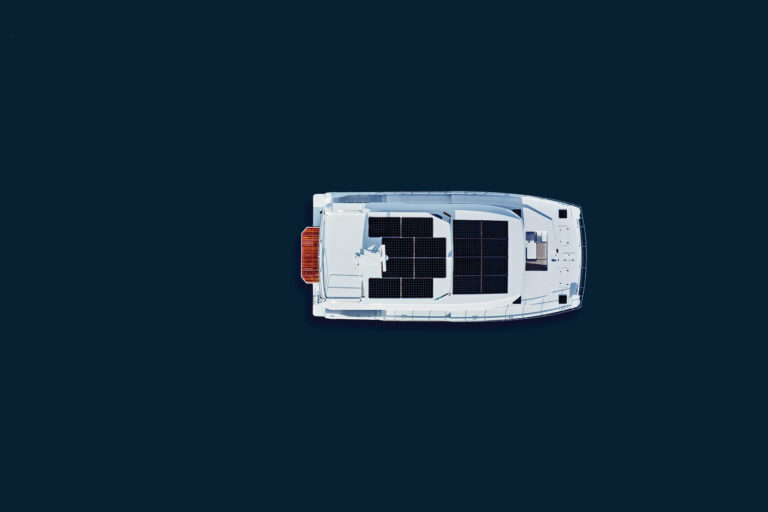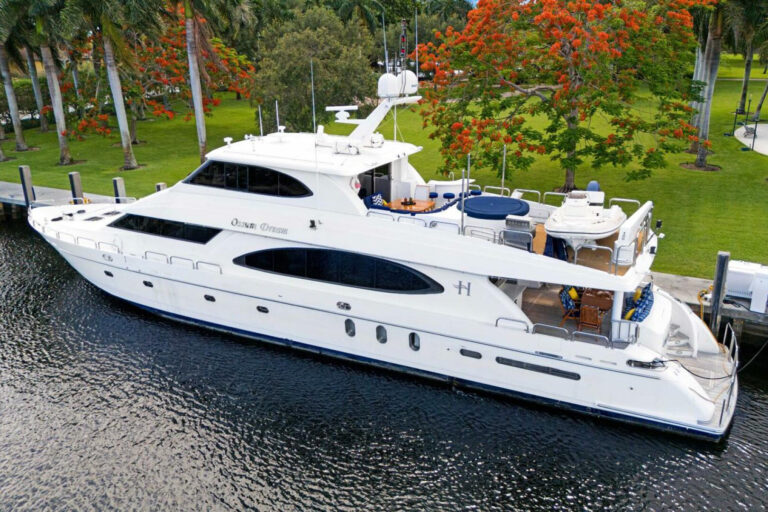
ytgoct23perf525.jpg
Propulsion systems for yachts are available in a wide variety of styles, including inboards (both traditional inclined shaft drives and tunnel drives), outboards (transom, bracket, and well-mounted), and stern drives (also known as inboard/ outboards or I/Os). Also available are pod drives, which are not new, but which have achieved increased popularity with the introduction of the IPS and Zeus drives in recent years. While each of these systems has its own particular advantages and disadvantages, they all have two things in common: Each uses a submerged open-water propeller, and each utilizes a submerged appendage to hold that propeller in position.
The amount of horsepower required to propel a vessel at a certain speed is proportional to its total resistance, and that resistance is made up of two components. The first, bare hull resistance, is just what it sounds like: the drag of the clean hull through the water. In simplest terms, it’s the tension on the towline as you pull your tender (with the outboard tilted clear of the water) behind your yacht. The other component of total resistance is appendage drag, which is the power consumed pulling or pushing struts and shafts on inboards, and drive legs and gear cases on outboards, I/Os, and pod drives, through the water. Also contributing to appendage drag are other additions to the bare hull, such as rudders, stabilizer fins, transducers, and even water-intake screens.
At low to moderate speeds, bare hull resistance is the dominant component, but as speed increases, the added power required to drag the appendages through the water can become quite significant. By reducing or eliminating appendage drag, higher-speed yachts can use less horsepower and fuel for a given speed, or achieve a higher top speed with the same horsepower. That’s why you’ll find surface drives (such as Arneson) or water jets (such as Hamilton or Kamewa) on many higher-speed vessels, including raceboats, fast ferries, and yes, even some yachts. These drive systems can be more expensive than submerged-propeller systems in both initial cost and continuing maintenance, but if you want to go fast, they’re the ticket for reducing drag and increasing speed.
Arguably, the foremost authority in the practical application of advanced high-speed propulsion systems is Donald Blount (Donald L. Blount & Associates, www.dlba-inc.com). Blount led the design, research, and testing efforts of the U.S. Navy’s small craft division for many years-small craft in Navy parlance being almost everything under 200 feet in length. He is also the naval architect who was central to the design of both Fortuna, a high-speed yacht for the king of Spain, and Destriero, which has held the transatlantic speed record for over a decade. In very general terms, Blount advises that below 25 knots, submerged propeller drives are the system of choice for overall propulsive efficiency, and that above 43 knots, water jets deserve a serious look. In between, submerged propeller drives, water jets, and surface drives each have their place.
Blount warns, though, that propulsive efficiency is not always the overriding factor, and that other boat and operational characteristics should be carefully considered before making a choice. There’s the matter of purchase and installation costs, as well as ongoing maintenance. Another significant factor is the design and intended use of the boat itself. If a wide variation can be expected in displacement and/ or longitudinal center of gravity between light- and full-load conditions, caution is in order. The advanced drive systems may be more sensitive to getting over the hump and up onto plane-there’s nothing more distressing than a boat that should run 50 knots, but which can’t break 20. Also to be considered is the situation where an owner wants 40-knot capability but will cruise at 25 knots for most of the boat’s operation. That’s the main reason why you won’t find many fast sportfishing yachts with surface drives or water jets.
These are the main propulsion alternatives available now, but there are many other considerations that go into the evaluation for your particular application. If you’re planning to move up into a higher-speed yacht, whether building new or repowering, we strongly suggest that you seek the advice of an experienced naval architect or marine engineer in selecting the best drive system. It will be money well spent.









